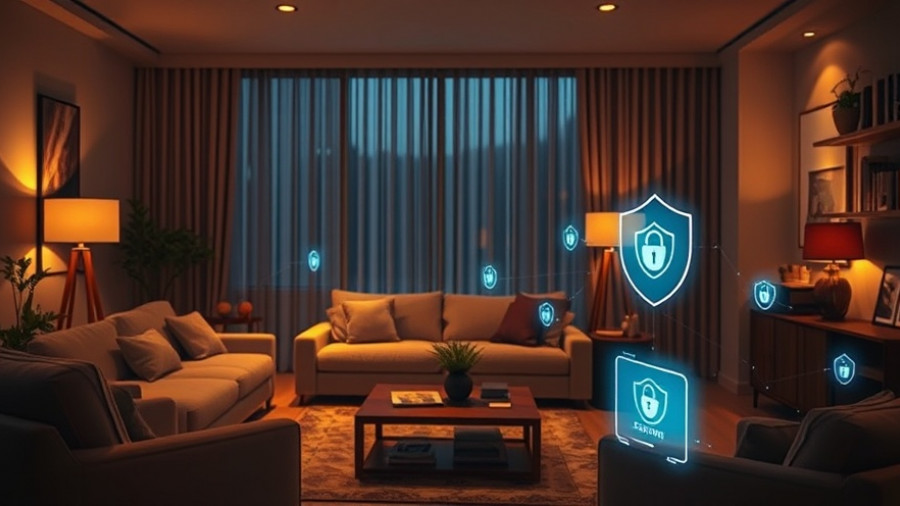
Understanding Smart Home Hacking: What You Really Need to Know
As homeowners in southeast Michigan increasingly embrace smart home technology, concerns about security are also on the rise. Smart devices—from cameras to thermostats—promise convenience but can open the door to potential vulnerabilities. Understanding the nuances of smart home hacking is crucial to protect your digital and physical space.
Myth vs. Reality: Debunking Common Misconceptions
One of the biggest misconceptions about smart home hacking is that hackers can easily infiltrate your devices from anywhere. The truth is that while internet-connected devices are reachable online, most modern systems use encrypted cloud services and authenticated apps to communicate. This means that successful hacks often stem from weak passwords rather than complex technical exploits.
Experts recommend utilizing unique, strong passwords for each account and enabling two-factor authentication. According to findings from PCMag, neglecting to secure Wi-Fi networks or using default credentials can provide hackers with easy access points. When securing your home, consider updating your security measures regularly and opting for well-supported devices that receive regular firmware updates.
The Importance of a Secure Wi-Fi Network
Based on insights shared by McAfee, a robust home network is the key line of defense against unauthorized access. Most routers come with default passwords that are publicly accessible online. Ensuring your Wi-Fi network has a unique, strong password and operates under the latest security protocols is paramount. Consider upgrading to the latest Wi-Fi standards like WPA3 for enhanced security.
Moreover, segmenting your network—keeping smart devices on a separate band—reduces the risk of exposure for your less secure devices from your main network containing sensitive data. This enhances your overall security and acts as a shield, preventing hackers from accessing sensitive information even if they manage to compromise a smart device.
Regular Updates: Your Best Defense Against Vulnerabilities
One of the most effective strategies to fortify your smart home is keeping devices and networks updated. Firmware updates patch vulnerabilities and introduce new features. Many smart devices, however, require users to manually initiate these updates. It is advisable to set reminders or enable automatic updates where available. Registering your devices with manufacturers can ensure you are notified of potential updates.
As discussed in the reference articles, failing to regularly update could leave devices exposed to known security flaws. Utilizing security solutions like McAfee’s Total Protection, which offers features such as password management and home network security, can simplify the maintenance of a secure smart home.
Smart Device Policies: Understanding Your Privacy
Before investing in a smart device, do your research. Recognize what personal data is being collected and whether the manufacturers have a history of protecting user information. In light of recent incidents involving compromised security cameras, understanding privacy policies is essential.
Moreover, assess what control you have over the information collected by your devices. Check for features that allow you to opt-out of data collection or access and delete collected data, enhancing your privacy and security.
Staying Informed: Knowledge is Your Best Tool
Lastly, education plays a vital role in smart home security. Stay informed about new threats and the best practices for securing your network. Consider exploring online resources, forums, and guides about smart home security. The McAfee guide on how to secure your smart home offers actionable insights that can be easily implemented.
By taking proactive measures—knowledgeably selecting products, implementing strong security protocols, and regularly updating firmware—you can enjoy the conveniences of smart home technology without fear. A secure smart home is the best kind of home.
 Add Row
Add Row  Add
Add 




Write A Comment